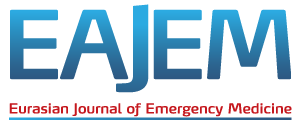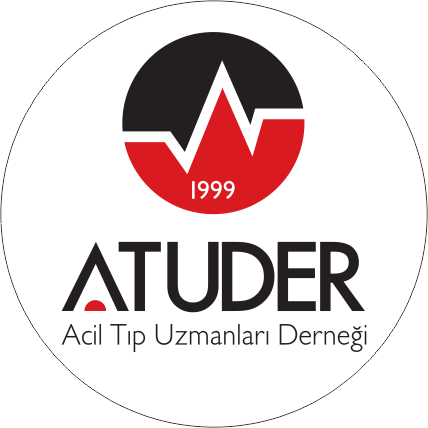Stroke remains a leading cause of mortality and disability world-wide, with its incidence projected to rise in the coming years. Blood biomarkers have demonstrated their value in disease identification and monitoring. While stroke severity is a key determinant of prognosis and recurrence risk, research on relevant blood biomarkers remains limited. Given that stroke pathophysiology involves a complex interplay of ischemia-driven inflammatory and immune responses, evaluating an immune-related biomarker panel in relation to stroke severity holds significant potential. Inflammatory markers have now been well studied as prognostic markers in acute ischemic stroke (AIS). Most research on inflammation in atherosclerotic disease has centered on cardiac conditions. While stroke shares certain pathophysiological similarities with ischemic heart disease, key distinctions warrant its independent investigation. Ischemic stroke exhibits greater etiological diversity compared to coronary artery disease. Additionally, stroke patients tend to be older on average and present with distinct risk factor profiles compared to those with cardiac disease. The role of these inflammatory markers starts in the vascular compartment immediately after arterial blockage (1). The pathophysiology of AIS is intricate and influenced by multiple factors. Scientific research has established a connection between inflammation and AIS, demonstrating its role in disease onset, progression, and outcomes (2, 3). In the early phase of ischemic stroke, various peripheral immune cells such as neutrophils, monocytes, T cells, and macrophages migrate into the brain parenchyma followed by a rise of inflammatory
markers (4). Consequently, evaluating inflammatory markers can provide valuable prognostic insights for AIS. Numerous inflammatory biomarkers, including albumin, interleukin, high-sensitivity C-reactive protein, tumour necrosis factor, and homocysteine, have been closely linked to AIS (5, 6). Beyond these individual indicators, composite inflammatory markers have also been utilized to predict AIS prognosis. One such marker, the neutrophil-to-lymphocyte ratio (NLR), which represents the balance between circulating neutrophils and lymphocytes, has shown a strong correlation with short-term functional outcomes in AIS patients (7). Post-ischemic inflammatory responses cause blood brain barrier disruption leading to haemorrhagic transformation, and subsequently worse prognosis of patients with AIS (8).
Another marker, the platelet-to-lymphocyte ratio (PLR), is a significant prognostic marker for AIS, offering insight into platelet activation driven by inflammation-coagulation interactions and other mechanisms (9, 10). Similarly, the systemic Immune-Inflammation index (SII) has been linked to poor AIS outcomes, highlighting its role in thrombotic and immune dysregulation. Once cerebral ischemia occurs, an excessive oxidative stress response follows, leading to structural and functional brain damage. Inflammation and oxidative stress, two early hallmarks of ischemic brain injury, are deeply interconnected. Choi et al. (11) highlights albumin level as an independent predictor of in-hospital mortality in AIS patients. While inflammatory indices such as NLR, and PLR offer valuable.
Initial insights into the consistent significance of albumin underscores its clinical utility for risk stratification. Routine albumin assessment in emergency settings can facilitate early risk evaluation and guide treatment strategies in patients with AIS.
Conclusion
Neutrophils, the first immune responders in ischemic stroke, have been clinically associated with poor functional outcomes. Approximately 12 hours after stroke onset, they infiltrate the brain parenchyma, triggering neuronal death through the release of elastase, matrix metalloproteinase-1, interleukin-1β, and reactive oxygen species. These processes compromise the blood-brain barrier and exacerbate damage in the ischemic region (12). Additionally, neutrophils express inducible nitric oxide synthase, an enzyme responsible for nitric oxide production, which has been linked to larger infarcts in cases of middle cerebral artery occlusion. The increase in neutrophils thus plays a pivotal role in ischemic brain injury. Platelets also contribute to thrombotic inflammation and stroke pathogenesis by interacting with neutrophils. Like neutrophils, activated platelets engage with the endothelium and release inflammatory mediators that amplify the post-stroke immune response, further intensifying inflammation.
Prediction of stroke outcomes requires a high degree of precision, which can be gained by a combination of clinical judgement, validated scales, neuroimaging and laboratory findings. The number of specific blood biomarkers is still low but these markers might play an important role in prognostic scales or even machine-based algorithms, which have already proven to outperform conventional scores in stroke and cardiovascular risk assessment.
Inflammatory markers play a crucial role in predicting the prognosis of AIS by reflecting the extent of immune activation and tissue damage. Biomarkers such as albumin, NLR, PLR, and systemic SII have shown promise in assessing stroke severity and outcomes. Future research should focus on integrating these markers into clinical practice through standardized panels and AI-driven predictive models. Additionally, novel inflammatory biomarkers and targeted immunomodulatory therapies could enhance stroke management, offering personalized treatment approaches. Advancing our understanding of inflammation in AIS may improve early risk stratification and therapeutic strategies.



